Cell therapy is an exciting and promising area which could benefit many diseases and comprises of two distinct approaches; 1)Regenerative medicine, where cells are used to regenerate areas of tissue damage; 2)Cancer therapy, where cells are directed to recognise and kill cancer cells. Therapeutic cells are effectively a "living drug" that have the ability to migrate, proliferate, and in the case of stem cells, differentiate into numerous cell types, with the potential for tissue regeneration. It is imperative that the efficacy of these therapies is assessed prior to them being applied to humans.
Cell Tracking
At CABI, we are interested in developing novel ways of tracking these cells throughout the body. We do this by utilizing nanoparticles and molecular imaging techniques to label the cells directly, or through genetic engineering of the cells to produce unique biomolecules (proteins, receptors, transporters) that can be imaged both longitudinally, and spatially. At CABI, we take a multi-modality approach for accessing cell distribution and cell fate over a range of imaging platforms (optical, photoacoustic, magnetic resonance and nuclear imaging) and across scales (whole body to cellular).
Combining this approach with functional imaging of therapeutic response allows us to understand the complexity of this therapeutic approach with unrivalled precision.
Through the knowledge of cell localisation, fate and therapeutic efficacy, we aim to move these innovative therapies closer to a wide range of clinical applications.
Magnetic Targeting of Therapeutic Cells
Magnetic targeting has emerged as a method of improving the delivery and retention of transplanted therapeutic cells within a target organ. Magnetic nanoparticles such as superparamagnetic iron oxide nanoparticles (SPIONs), which become magnetic in the presence of a magnetic field, have been utilized to image and guide cells to sites of injury. In CABI we have pioneered the use of magnets as ways of steering labelled cells either by externally placed magnets or by utilizing the MRI scanner - a technique known as Magnetic Resonance Targeting (MRT). MRT was developed at CABI in collaboration with Prof Quentin Pankhurst. Reports demonstrate up to a 30-fold improvement in cell delivery and retention with a significant increase in therapeutic effect in some cases, suggesting that SPIONs are indeed an effective way of targeting cells.
Magnetic Actuation of Cells
The behaviour of cells can be influenced by magnetic particles in a process known as magnetic actuation. Magnetic particles can induce actuation via applying force to a cell (mechanotransduction), thermal stimulation (heating of the particle) or by the introduction of genes (magnetic transfection). In regenerative medicine, magnetic actuation has the potential to control cell activation, differentiation, proliferation and migration of specific cell types enhancing their biological function. At CABI we are exploring how manipulation cell phenotype and behaviour can be finely tuned utilising magnetic actuation and how this innovative field can provide important tools to realize the full potential of cell therapies.
Link to UKRMP Safety Hub website
Principle Investigators
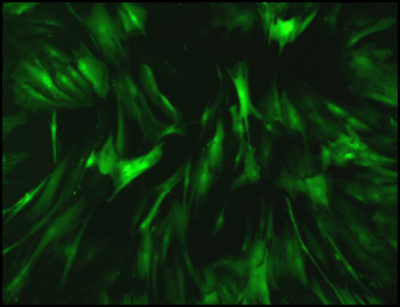
GFP labelled stem cells
Green fluorescent protein (GFP) can be used to track cells optically.
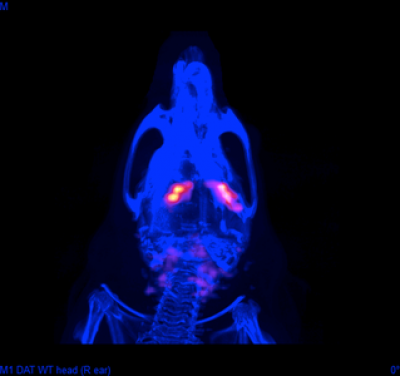
SPECT/CT
Single photon emission computed tomography (SPECT) can be used to track cells deep in tissue using gamma ray emissions.
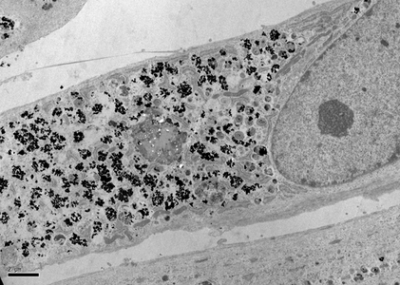
Iron labelled cells
Scanning electron micrograph of stem cell labelled with iron oxide nanoparticles.
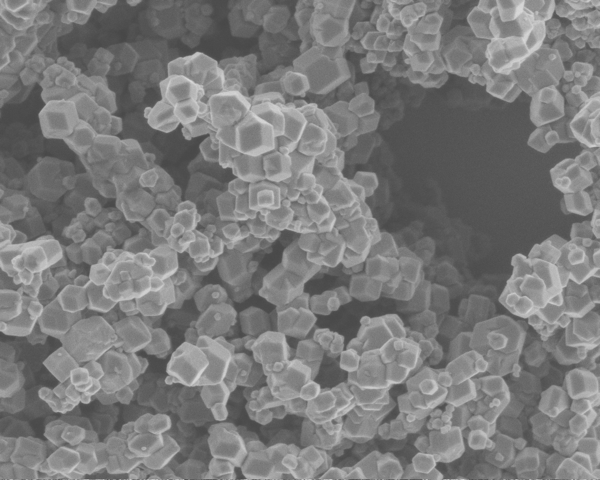
Iron nanoparticles
Scanning electron micrograph of magnetite particles (50,000x magnification).
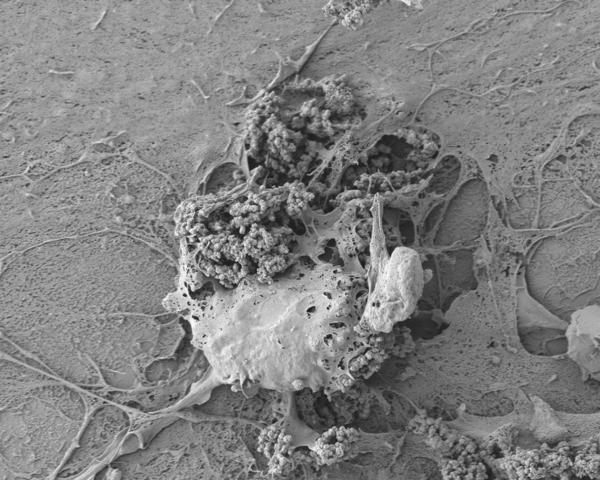
Iron labelled astrocyte
Scanning electron micrograph of an astrocyte with magnetite particles attached to its cell membrane (25,000x magnification).
 Close
Close

